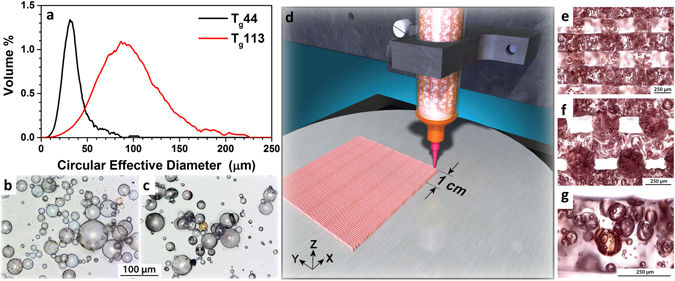Lawrence Livermore National Laboratory (LLNL) has revealed more details about its 4D printed silicone material.
When squashed down to a fraction of its size, the polymer is capable of regaining its original shape, giving it properties suitable for form-fitting cushioning like that found in clothes, motorcycle helmets, and shoe insoles.
Discovered by chance, LLNL researchers now have a patent pending for the material’s commercial use.

A serendipitous discovery
Initially, the LLNL team were attempting to engineer a shape-memory hierarchical porous material, used in commercial adsorbents and catalysts for things like gas and air filters.
Contrary to what the researchers expected, the developed porous material did not automatically recover its shape after compression.
LLNL scientist Ward Small explains, “We weren’t really thrilled about that, but we had experimented with shape memory in the past and tried to see if it could recover its shape when heated.”
“We tested it and it did.”
4D printed micro balloons
The material is actuated by gas filled micro-balloons embedded in a silicone ink. When cold, the gas inside the balloons is compressed, giving the material its natural flat state.

Heating the material creates activity in the gas causing the balloons to expand and take on a larger shape.
When it cools again, the crosslinked silicone allows the material to recover its original shape.
Commercial use
This process of expansion and compression happens in an entirely predictable and repeatable way, meaning that it could be advantageous to a range of commercial applications. LLNL materials scientist Eric Duoss suggests, “You could use this for any customized mechanical energy-absorbing material,”
“The neat thing is if the wearer grows a little bit and wants to refit the material, they just heat it up [e.g. in warm water] to expand it, put it on and let it cool to once again customize the fit. It’s reversible. It’s a completely new material really, and we’re excited about it.”
As such, the researches have since filed a patent application for intellectual protection of the material’s properties.
Direct ink writing is the key
The decision to 3D print micro-balloon silicone has been important to the material’s success. By using direct ink writing (DIW) the researchers were able to make more functional, lightweight products, and apply greater control over an object’s design.
The fourth dimension of the technique, as in research from Skylar Tibbits Self-Assembly Lab, is time, i.e. the period of transformation between heating and cooling.
Concluding comments from Duoss explain how “Historically, shape memory polymers tend to be very rigid,” e.g. memory foam mattresses, “By incorporating micro-balloons into a rubbery matrix, we’ve created a composite that is soft and stretchy,”
“[The effect] is a shape memory material with previously unattainable qualities. It turned out to be very fortuitous.”
3D Printed Silicones with Shape Memory is published open access in the journal Scientific Reports. It is co-authored by Amanda S. Wu, Ward Small IV, Taylor M. Bryson, Emily Cheng, Thomas R. Metz, Stephanie E. Schulze, Eric B. Duoss and Thomas S. Wilson.
Find more of the latest 3D printing related research on Facebook/Twitter and in our regular newsletter.
Get involved with 3D printing events near you here.
Featured image: (From left) LLNL researchers ) Ward Small, Amanda Wu and Taylor Bryson examine a wafer of 4D silicone material. LLNL photo by Carrie Martin.



